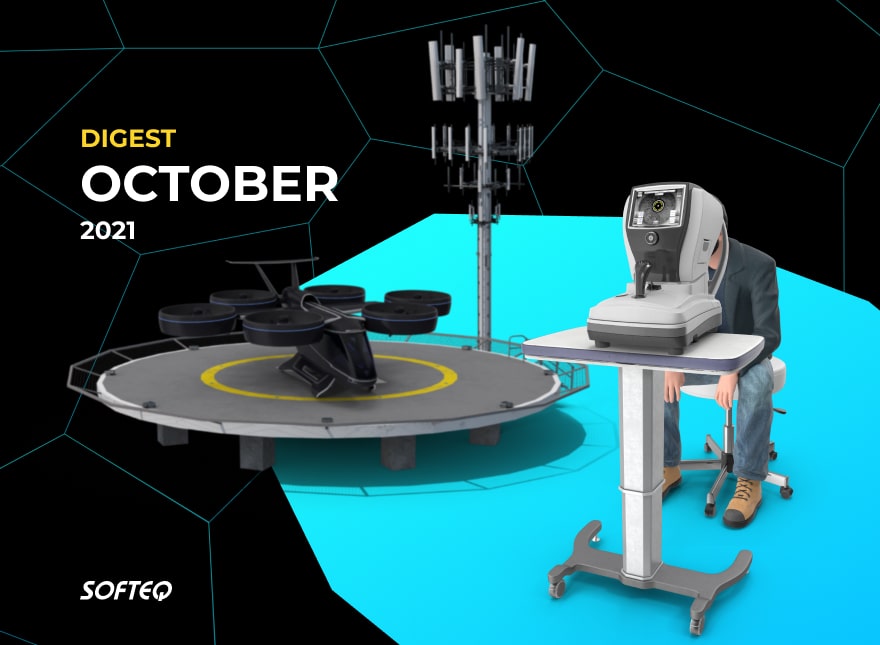Check out our latest blog article: From component to enterprise – modular robotics done right.
This is What Techies Talked About in October 2021

In this issue of the Tech Digest: a new AI technology helps diagnose serious eye disorders, a recently-opened hub with reputable partners is here to speed 5G developments, and urban air mobility is advancing and (probably) soon will carry passengers. All that and more in a 10-minute read.
A New Solutions Lab to Test 5G Innovations
Commercial 5G networks are currently operating in 61 countries around the world. It's not much, but it’s the beginning. Given the fact that hundreds of operators continue to invest in 5G, we can clearly predict a trend toward widespread adoption. But manufacturers of 5G-based solutions are still in no hurry to bring them to market. One reason is the lack of infrastructure for testing their products.
Recently, semiconductor company Arm has announced a new cross-partner 5G Solutions Lab. The lab will allow organizations working on 5G projects to gain easy access to the hardware and software needed to test new products. What’s important is that the lab has some tech giants as partners, including Google, GSMA, NVIDIA, Tech Mahindra, and more.
Modern Safety Systems in eVTOL Aircrafts to Comply with Future Regulations
Air taxi, or electric vertical take-off and landing (eVTOL) aircrafts, are now under development by more than a dozen different companies. The challenge for these eVTOL manufacturers is to provide the highest level of safety. Not one of them is yet certified to carry passengers, though. The main stumbling point is safety regulations. They are still under development by agencies such as the United States Federal Aviation Administration (FAA) and the European Union Aviation Safety Agency (EASA). If the aircraft characteristics under development do not meet these future requirements, the companies will not be able to bring them to market.
The German manufacturer Volocopter claims that the safety level of their aircraft will be beyond the certification limits for a large passenger aircrafts. Their goal is not only to comply with future regulations, but also to make people feel safe on board. Learn how this is possible and what safety systems their competitors have come up with.
A New AI System to Improve Eye Disease Detection
Not all medical clinics have the resources to screen patients for eye diseases like diabetic retinopathy. Instead, health care providers have to send them to ophthalmologists. As a result, many patients don’t get the needed follow up care because they would have to take time off from work. What if primary care doctors could use technology to screen patients' eyes and send patients to ophthalmologists when problems are detected?
AI is ideally suited to solve this problem. A good example is an AI retinal expert system called CARE. It aims to detect and monitor retinal diseases on a large scale. The solution was developed using fundus photography in combination with a deep-learning system. It was trained on data from real-world case studies of retinal disease and tested using fundus photographs collected from clinical settings. Read more on the invention, and how the industry will benefit from using it.
Gartner Predictions for 2022
Every autumn, Gartner introduces its strategic predictions for the following year. They primarily address business processes, strategies, and IT operations. This year isn’t an exception. Newly-released predictions are made up of human-related trends rather than technology expectations. They reflect the changing face of the working world.
For example, by 2024, 40% of consumers will be tricking the behavior-tracking metrics. The idea here is that people want to protect their data from companies by faking it. Then, businesses couldn’t monetize the personal information of users. Guess what the other top Gartner's strategic predictions for 2022 are?
